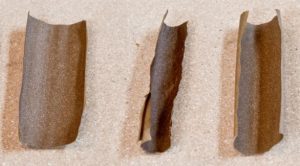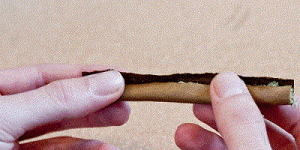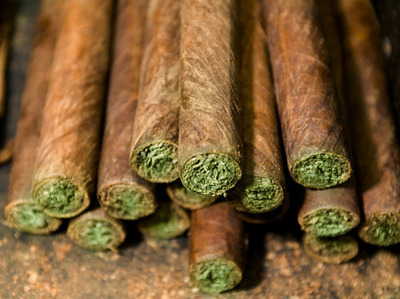Choose your blunt wrapping
 The traditional way of getting the wrapping for your blunt is to empty a cigar or, more commonly, a cigarillo. Presumably, you would then use the tobacco in a regular smokers pipe and/or to make spliffs (a mixture of weed and tobacco). If you want to stick with tradition, then the straightforward way to empty the cigar(illo) is to cut the wrapper length ways using a sharp knife. If you think you’re going to want to do this on a regular basis, then you may want to invest in a craft knife. In principle, it is possible to split a wrapper by applying pressure with your fingers in the right place, but a decent knife is probably the easier option, particularly if you’re new to weed. Alternatively, you can just buy blunt wraps (also known as cigarette wraps).
The traditional way of getting the wrapping for your blunt is to empty a cigar or, more commonly, a cigarillo. Presumably, you would then use the tobacco in a regular smokers pipe and/or to make spliffs (a mixture of weed and tobacco). If you want to stick with tradition, then the straightforward way to empty the cigar(illo) is to cut the wrapper length ways using a sharp knife. If you think you’re going to want to do this on a regular basis, then you may want to invest in a craft knife. In principle, it is possible to split a wrapper by applying pressure with your fingers in the right place, but a decent knife is probably the easier option, particularly if you’re new to weed. Alternatively, you can just buy blunt wraps (also known as cigarette wraps).
Grind your weed
Sticklers for tradition will grind their weed by hand on the grounds that, according to tradition, hand-ground weed will help your blunt to burn more slowly. This may or may not be true, but the modern way of thinking is that getting an even and consistent burn is at least as important as getting a slow burn, which is why manual grinders are the better option. It’s also worth noting that the more THC your preferred choice of weed has, the stickier it will be, which is another reason to prefer a manual grinder. Alternatively, split the difference and grind half your weed by hand and half of it with a manual grinder.Moisten your wrapper
Note the use of the word “moisten” rather than the word “wet”. You can do this by running your damp tongue lightly over your blunt wrapper or by dipping the ends of your fingers in water and letting them drip over it, but only do the minimum to achieve your goal, which is to make your wrapper more pliable and therefore easier to shape. Do not, go overboard with this, for example, by running your blunt wrapper under a tap or actually dipping it in water or you could make it soggy beyond redemption.Fill your wrapper
 When you first start learning how to roll a blunt, you may find this a bit trickier than it sounds and you’ll probably find that you get less weed into your blunt wrapper than you think you should. This is fine, like pretty much everything else in life, leaning how to roll a blunt gets easier with practice. As a beginner, you should expect to get one or perhaps 2 grams of weed into the average-sized cigarillo wrapper. Once you get the knack of filling your blunt, you should be able to fit in a lot more. The key point is to fill your blunt, rather than packing it. In other words, you want your weed to be distributed evenly without any gaps but you still need there to be room for the air to flow, so resist the temptation to pack it as full as you possibly can.
Remember that one big difference between blunts and joints is that once you’ve sealed your blunt, that’s basically it, in terms of the distribution of the weed, whereas with a joint, you have a bit more of an opportunity to manipulate the weed to make your joint smoke better. You can, however, use a tool such as a pen lid to move the weed about inside your blunt before you seal it.
When you first start learning how to roll a blunt, you may find this a bit trickier than it sounds and you’ll probably find that you get less weed into your blunt wrapper than you think you should. This is fine, like pretty much everything else in life, leaning how to roll a blunt gets easier with practice. As a beginner, you should expect to get one or perhaps 2 grams of weed into the average-sized cigarillo wrapper. Once you get the knack of filling your blunt, you should be able to fit in a lot more. The key point is to fill your blunt, rather than packing it. In other words, you want your weed to be distributed evenly without any gaps but you still need there to be room for the air to flow, so resist the temptation to pack it as full as you possibly can.
Remember that one big difference between blunts and joints is that once you’ve sealed your blunt, that’s basically it, in terms of the distribution of the weed, whereas with a joint, you have a bit more of an opportunity to manipulate the weed to make your joint smoke better. You can, however, use a tool such as a pen lid to move the weed about inside your blunt before you seal it.
Roll your bunt
You might have heard about rolling cigars, well it’s the same idea, only you’re rolling to seal in the weed. Just, literally, roll the blunt between your fingers so that the ends join.
NB: If for some reason, you have left your blunt wrapper for a while, so it has dried out, it would be a good idea to moisten it again, to reduce the risk of it tearing through dryness. If it does tear, you can use a standard rolling paper to cover over it, so, when you’re still getting to grips with how to roll a blunt, you might find it useful to keep a stock of them handy.
rolling to seal in the weed. Just, literally, roll the blunt between your fingers so that the ends join.
NB: If for some reason, you have left your blunt wrapper for a while, so it has dried out, it would be a good idea to moisten it again, to reduce the risk of it tearing through dryness. If it does tear, you can use a standard rolling paper to cover over it, so, when you’re still getting to grips with how to roll a blunt, you might find it useful to keep a stock of them handy.









